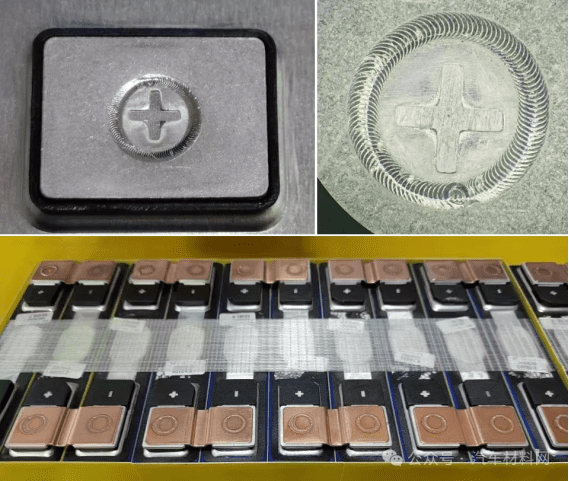Basic Concept of Battery Modules
With the rapid development of electric vehicles and energy storage systems, battery module manufacturing has become a critical part of advancing green energy. As a core component, a battery module integrates multiple cells connected in series and parallel, equipped with a thermal management system, battery management system (BMS), and structural parts to ensure safety and high efficiency. The production process includes cell sorting, assembly, welding, packaging, and testing, all requiring extremely high precision in technology and equipment.

Core Applications of Laser Technology
In battery module production, laser welding has become an indispensable core process. Taking tab welding as an example, this critical step connects 0.1mm thick copper or aluminum foil to terminals with high precision. Tabs are the electrical contact points for the cells and require extremely reliable connections. Laser welding precisely controls energy input, completing high-quality connections within milliseconds, with a heat-affected zone limited to within 0.5mm, effectively avoiding damage to the internal cell structure. Combined with fiber lasers and high-speed galvanometer scanners, welding speeds can reach 300 points per minute, fully supporting automated production lines.
In busbar welding, laser deep penetration welding can achieve high-strength welds in one pass for 2-4mm thick copper or aluminum busbars. Advanced welding systems integrate plasma monitoring and infrared temperature measurement modules for real-time welding quality control. Practical data shows that laser welding improves module electrical resistance consistency by approximately 40% and reduces module temperature rise by about 25%.
For sealing welding, laser oscillation welding technology produces high-quality weld seams with widths between 0.3-0.8mm, balancing strength and airtightness while avoiding pollution residues common in traditional welding. This sealing welding is widely applied to battery cases and module protective covers to ensure overall system safety.
Additionally, laser marking technology provides permanent identity labeling for battery modules. Modern laser marking systems can engrave high-contrast QR codes on stainless steel, aluminum alloy, and other surfaces with excellent wear resistance and chemical corrosion resistance, suitable for extreme temperature conditions from -40°C to 120°C. Case studies show that after adopting laser marking, traceability accuracy of battery modules increases from 92% to over 99.9%, greatly enhancing product lifecycle management.
Currently, laser technology is deeply integrating with artificial intelligence. Intelligent welding systems use machine learning algorithms to detect material type, thickness variation, and assembly gaps in real-time, automatically adjusting welding parameters. When faced with tab size changes or assembly tolerances, the system intelligently switches laser oscillation modes to achieve full-process adaptive control. In practice, intelligent welding reduces welding defects to one-tenth of previous rates. With the development of 5G and industrial internet, laser technology is accelerating the evolution of battery module manufacturing toward intelligence and flexibility.
Technological Evolution and Industry Outlook
As electric vehicles and energy storage sectors continuously demand higher battery module safety, lightweight design, and power density, laser technology is evolving toward greater intelligence and integration. Next-generation laser equipment widely integrates real-time welding monitoring, adaptive process control, and AI-based defect prediction functions to optimize welding quality throughout production.
In the future, intelligent laser manufacturing will become the core competitive advantage in battery module production. It will not only significantly improve yield and productivity but also enable flexible manufacturing to rapidly respond to diverse battery models and small batch orders. Mastering intelligent laser manufacturing means gaining the initiative in the competitive new energy battery industry.